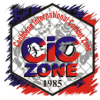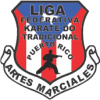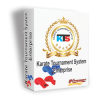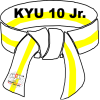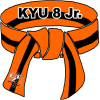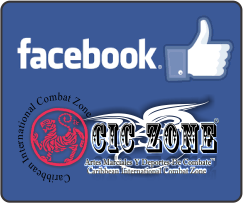NC machining offers several advantages when it comes to creating parts from ABS plastic. Here's a closer look at the key benefits:
Cost-Effectiveness: ABS is a relatively inexpensive material compared to some metals or engineering plastics. This makes CNC machining ABS a budget-friendly option for various applications. For prototyping or low-volume production runs, the combined affordability of the material and the machining process translates to significant cost savings.
Versatility: ABS boasts exceptional versatility when it comes to shaping. CNC machining allows for precise control over the cutting tools, enabling the creation of ABS parts in a wide variety of shapes and sizes. This adaptability makes it suitable for a broad range of applications, from intricate electronic housings to functional machine components.
Good Machinability: Unlike some materials that require specialized techniques or present machining challenges, ABS is known for its good machinability. Standard CNC machining processes can effectively work with ABS, resulting in faster production times and lower machining costs. The machinability of ABS allows for efficient creation of complex features and geometries without requiring extensive modifications to the machining process.
Balanced Strength and Impact Resistance: ABS offers a valuable combination of strength and impact resistance. This makes it suitable for parts that require a certain level of durability to withstand some degree of wear and tear or accidental impacts. In applications where high structural integrity is not the primary concern, ABS provides a good balance between functionality and affordability.
Lightweight Properties: ABS is a lightweight material, which can be a significant advantage in certain applications. For parts where weight reduction is crucial, CNC machined ABS becomes a favorable choice. This is particularly relevant in applications like drone components or mobile device enclosures where minimizing weight is essential for performance or user experience.
For more information,please click:https://www.jtrmachine.com/cnc-machining-abs-parts...
Sign Up
Your Martial Arts Social Media helps you connect and share with the people in your life.
Topic: CNC
What Are the Benefits of CNC Machining Titanium Parts?
by jin
CNC machining offers numerous advantages when it comes to creating titanium parts. Here's a deeper look at the key benefits:
Exceptional Strength-to-Weight Ratio: Titanium boasts a remarkable combination of high strength and low weight. This unique property makes it a top choice for applications where weight reduction is crucial without compromising on structural integrity. Aircraft components like landing gear and engine parts heavily rely on this benefit. In the world of prosthetics, lightweight yet strong titanium implants enhance patient mobility and comfort.
Superior Corrosion Resistance: Titanium exhibits exceptional resistance to corrosion, even in harsh environments. This makes it ideal for parts exposed to saltwater, chemicals, or extreme temperatures. Marine equipment like valves and propellers benefit from titanium's ability to withstand harsh ocean environments. Medical implants, constantly exposed to bodily fluids, require a material that resists corrosion to ensure longevity and biocompatibility.
Biocompatibility: Certain grades of titanium are biocompatible, meaning they are well-tolerated by the human body. This characteristic makes them invaluable for medical implants like hip replacements and dental screws. The biocompatibility of titanium minimizes the risk of rejection by the body, ensuring successful long-term functionality of implants.
Precision and Complex Geometries: CNC machining allows for precise control over the cutting tools, enabling the creation of parts with highly accurate dimensions and intricate features. This is particularly beneficial for complex geometries that would be challenging or impossible to achieve with traditional manufacturing methods. From intricate details on aerospace components to the complex shapes of medical implants, CNC machining ensures precise and consistent results.
Durability and Long Lifespan: Titanium parts are renowned for their exceptional durability and long lifespan. Their inherent strength and resistance to corrosion contribute to their ability to withstand demanding environments and mechanical stresses. This translates to parts that function reliably for extended periods, minimizing the need for replacements and downtime.
For more information please click:https://www.jtrmachine.com/cnc-machining-titanium-parts...
Topics:
cnc
How Accurate Are the Speed Regulating and Batching Belt Scales?
by bincheng
You're absolutely right! The accuracy of speed regulating and batching belt scales depends on two key factors:
Base Belt Scale Performance: This refers to the inherent accuracy of the belt scale itself. Factors like weighbridge design, load cell quality, and calibration procedures all influence the base accuracy of the weight measurement.
Control System Capabilities: The control system plays a crucial role in interpreting the weight data from the belt scale and translating it into adjustments for the conveyor belt speed. The processing power, signal filtering algorithms, and control logic implemented in the system can significantly impact accuracy.
Accuracy Range
Taking both these factors into account, speed regulating and batching belt scales can achieve accuracy within a range of:
0.1% to 1% for high-precision systems: This is typically applicable for carefully designed and well-maintained systems with high-quality components.
Lower accuracy for less demanding applications: For applications where absolute precision is not critical, some systems might achieve acceptable results within a broader accuracy range (e.g., 2-5%).
Additional Factors Affecting Accuracy
While the base belt scale performance and control system capabilities are the main determinants, some other factors can influence the accuracy of speed regulating and batching belt scales:
Material Distribution on the Conveyor Belt: Uneven material distribution across the belt can lead to inaccurate weight measurements. Proper belt loading practices and scraper systems can help mitigate this.
Belt Slippage: If the belt slips relative to the weighbridge, it can cause discrepancies between the actual material flow and the measured weight. Maintaining proper belt tension is crucial.
Maximizing Accuracy
To achieve the highest possible accuracy with a speed regulating and batching belt scale system, consider these steps:
Invest in a high-quality belt scale: Choose a belt scale with a reputation for accuracy and reliable performance.
Implement a robust control system: Ensure the control system has sufficient processing power, effective filtering algorithms, and well-designed control logic.
Regular calibration and maintenance: Regularly calibrate the belt scale and maintain the conveyor system to minimize errors.
Optimize material flow: Ensure consistent and even material distribution across the conveyor belt.
By understanding these factors and implementing best practices, you can get the most out of your speed regulating and batching belt scale system, achieving accurate material flow control and precise batching for your specific application.For more information please click:https://www.truckscale-cn.com/speed-regulating-and-batching-belt-scale...
Topics:
cnc
How Does the Cost of CNC Turning Titanium Parts Compare to Other Methods?
by jin
CNC turning titanium parts generally falls on the higher end of the cost spectrum compared to machining other materials. Here's a breakdown of the factors affecting the price and how it compares to other methods:
Factors Affecting Cost of CNC Turning Titanium
Material Cost: Titanium itself is a more expensive raw material compared to commonly used metals like aluminum or steel.
Machinability: Titanium's strength and tendency to work harden during machining necessitate slower cutting speeds, specialized cutting tools with higher wear resistance, and potentially more hands-on operator involvement. These factors contribute to increased machining time and cost.
Part Complexity: Simpler, rotationally symmetrical parts suitable for CNC turning will generally be less expensive than parts with complex features requiring additional machining processes.
Part Size: Larger titanium parts will require more material and potentially longer machining times, leading to higher costs.
Finishing Requirements: Additional post-processing steps like polishing or anodizing will add to the overall cost of the CNC turned titanium parts.
Cost Comparison with Other Methods
CNC Turning Softer Metals: CNC turning aluminum or steel parts is significantly cheaper due to lower material cost, faster machining speeds, and less demanding tooling requirements.
CNC Milling Titanium: The cost can be comparable to CNC milling titanium, depending on part complexity. Milling might be more suitable for parts with non-cylindrical features but could involve additional complexities impacting cost.
3D Printing Titanium: For very complex parts, 3D printing titanium with metal powder bed fusion technologies can be even more expensive than CNC turning. However, for simpler designs, 3D printing might be competitive in terms of cost.
Casting or Forging Titanium: For high-volume production of relatively simple titanium parts, casting or forging can be the most cost-effective option. However, these methods offer less flexibility in design compared to CNC machining.
When deciding on the most cost-effective method for your titanium parts, consider the factors mentioned above. Consulting with a qualified CNC machining service provider can help you evaluate your design, production volume, and budget to determine if CNC turning is the most suitable and cost-effective approach for your specific needs. They might also suggest alternative manufacturing methods if better suited for your application. For more information please click:https://www.jtrmachine.com/cnc-turning-titanium-parts...
Topics:
cnc
Can Titanium Be CNC Milled?
by jin
You're absolutely right! Titanium can indeed be CNC milled, but it presents some unique challenges compared to softer metals. Here's a breakdown of why specific tooling and techniques are necessary:
Strength and Heat Resistance:
Tough Material: Titanium is a very strong metal, making it more challenging to machine than softer materials like aluminum. This requires robust cutting tools and higher cutting forces during the CNC milling process.
Heat Generation: The machining process generates heat. Titanium has high heat resistance, which can be a double-edged sword. While it doesn't melt easily, excessive heat can damage the cutting tools and negatively affect the machined surface of the titanium part.
Specific Tooling and Techniques:
Sharp and Durable Cutters: CNC milling titanium requires using specially designed cutting tools made from very hard and wear-resistant materials like carbide or specific tool steels. These tools can withstand the cutting forces and maintain sharp edges for clean cuts.
Low Speed and High Torque: To minimize heat generation and prevent tool wear, CNC milling of titanium typically utilizes lower spindle speeds compared to softer metals. However, the cutting process might require higher torque to overcome the material's strength.
Coolant Management: Using a high-pressure coolant throughout the machining process is crucial. The coolant helps dissipate heat from the cutting zone, protecting the tools and ensuring good surface quality on the titanium part.
Advantages of CNC Milling for Titanium:
Precision and Complexity: CNC milling offers exceptional precision and can create intricate geometries on titanium parts. This is crucial for applications like medical implants or aerospace components.
Strength-to-Weight Ratio: Titanium's high strength-to-weight ratio makes it ideal for parts requiring both durability and minimal weight. CNC milling allows for efficient creation of such parts.
Design Flexibility: CNC milling can accommodate a wide range of titanium part designs, from simple shapes to complex geometries.
Overall:
While CNC milling titanium requires specific considerations and specialized tooling, it remains a valuable manufacturing technique for creating high-precision, high-strength parts from this versatile metal. If you have a titanium part design in mind, consulting with a qualified CNC machining service provider can help determine if CNC milling is the most suitable approach for your application. For more information please click:https://www.jtrmachine.com/cnc-milling-titanium-parts...
Topics:
cnc
What Is 17-4ph Stainless Steel
What Is 17-4ph Stainless Steel? 17-4PH stainless steel is a high strength, corrosion resistant and ductile steel. 17-4PH stainless steel is an age-hardened steel that can be heat treated and cold worked to increase its strength and hardness. The material has good thermal stability and can work at high temperatures.
Advantages And Disadvantages Of 17-4PH Stainless Steel
17-4PH is a deformation-controlled phase precipitation hardening stainless steel obtained by adding Al on the basis of 18-8 austenitic stainless steel. When the steel is cooled to room temperature during solution treatment, it still retains the austenite structure, so it is easy to process and shape. After appropriate treatment, it will eventually transform into a martensite structure and reach a high strength level. This steel has poor low-temperature toughness and becomes brittle below -100°C. The corrosion performance is better than that of general martensitic stainless steel.
Chemical properties: Oxidation resistance is similar to that of 18-8 austenitic stainless steel. The corrosion resistance is better than that of general martensitic stainless steel, between nickel-chromium austenite and martensitic stainless steel.
17-4PH stainless steel has the following advantages:
Good mechanical properties: In the annealed state, 17-4PH stainless steel has high strength and toughness and can be used to manufacture high-strength parts.
Good welding performance: 17-4PH stainless steel can be structurally welded by conventional welding methods without causing degradation of microstructure and properties.
Good dimensional stability of parts: 17-4PH stainless steel experiences smaller volume changes during the heat treatment process, so the parts are dimensionally stable after cnc machining 17-4ph stainless steel parts.
Excellent high-temperature stress relaxation performance: 17-4PH stainless steel has good high-temperature stress relaxation resistance, so it maintains good mechanical properties when exposed to high temperatures for a long time.
Good corrosion resistance: 17-4PH stainless steel contains elements such as chromium and nickel, and has good corrosion resistance in acid, alkali and other environments....
Topics:
cnc
What Metals Can Be Anodized?
by jin
Metals commonly anodized
Aluminum: Unquestionably the best anodizing material, it has a naturally occurring oxide layer that easily thickens and becomes colored during the process. provides outstanding wearability, corrosion resistance, and aesthetics.
Titanium: Titanium oxide is anodized to produce a vivid, long-lasting layer that has a distinct rainbow color. utilized in sporting goods, jewelry, and medical implants for both functional and decorative purposes.
Magnesium: mainly anodized to serve as a foundation for paint adhesion because of the thin native oxide layer. better than aluminum in terms of aesthetics and corrosion resistance, but is not as widely used.
Metals that can be anodized with limitations
Tantalum: High biocompatibility and corrosion resistance make it ideal for electronics and medical implants. Compared to other metals, anodization is less common and more complicated.
Niobium: Comparable to tantalum, it has a high resistance to corrosion and is employed in specific fields such as superconducting magnets and capacitors. Commercial anodization is not a common practice.
Zinc: Mainly used for ornamental purposes because of its low wear resistance. offers vivid colors and serves as a paint primer.
Metals generally not suitable for anodization
Steel: Anodizing produces a strong oxide layer that is fragile and prone to cracking. For steel, alternative surface treatments like galvanizing are recommended.
Copper: When anodized, a dull, black oxide layer forms; this layer is not appropriate for most applications. For copper, alternative finishing methods such as electroplating are recommended.
Nickel: Like copper, it is rarely anodized and develops a dull black oxide layer.
Never forget that anodized finishes can differ in success and characteristics even when the metals are compatible due to different alloy compositions and pre-treatment methods. The best course of action for your unique application and intended result must be determined by consulting with a professional anodizing service.
For more information,please click:https://www.jtrmachine.com/anodizing...
Topics:
cnc
What Are the CNC Machining Nylon Design Limitations?
by jin
Although nylon can be machined with great versatility using CNC, there are certain drawbacks. You can design parts that are manufactured and steer clear of potential issues during the machining process by being aware of these limitations. Some important design factors are as follows:
Geometry:
Sharp angles and corners: Sharp internal corners can be difficult to reach with standard cutting tools, which can result in weak areas or a surface that is not well-finished. Consider using different designs or rounded fillets to improve manufacturability.
Thin walls and sections:Errors could arise from vibrations and deflections caused by excessively thin walls during machining. Wall thicknesses larger than four times the tool diameter should be the goal for optimal outcomes.
Large flat surfaces: Nylon may slightly warp during machining as internal stresses are released. Big flat sections could be reinforced with ribs or split into smaller panels.
Internal features and undercuts: Because nylon lacks some of the metal's hardness, internal features with undercuts are challenging to machine. Make sure there is sufficient tool access for a clean material removal and stay away from sharp edges.
Tooling and Machining:
Deep cuts and high feed rates: Adopting aggressive machining parameters could cause the tool to deflect or overheat, deteriorate the nylon. Consider your coolant options and maintain moderate feed rates for deeper cuts.
Tool reach and access: Complex geometries with limited tool access could call for extra setups or specialized equipment, adding to the cost and time of production. Choose simpler designs that are simpler to work with using end mills and standard drills.
Tool types and materials: For optimal cutting and finishing, some types of nylon may require specific tool types, like diamond-coated bits. Discuss recommended tooling with your CNC machining shop in light of the nylon you have chosen.
Material Properties:
Strength and stiffness: Although nylon is strong, it is not as strong as some metals. Design your parts with enough wall thickness and support features to withstand anticipated loads and stresses.
Thermal expansion and contraction: Nylon expands and contracts in response to temperature changes. When designing for applications where temperature swings are significant, especially for close-fitting parts, keep this in mind.
Dimensional stability: Nylon's ability to absorb moisture may result in slight dimensional changes. Consider loose tolerances and allow for potential variations resulting from outside influences whenever possible.
For more information,please click:https://www.jtrmachine.com/cnc-machining-nylon-polyamide-parts...
Topics:
cnc
What Are the Design Limitations for CNC Machining Nylon?
by jin
While CNC machining nylon offers incredible versatility, it's not without limitations. Understanding these limitations can help you design parts that are manufacturable and avoid potential problems during the machining process. Here are some key design considerations:
Geometry:
Undercuts and internal features: Nylon is not as hard as certain metals, which makes it difficult to machine internal features that have undercuts. Steer clear of sharp edges and make sure there is enough tool access for a clean removal of material.
Thin walls and sections: Overly thin walls may vibrate and deflect during machining, which could result in errors. For best results, aim for wall thicknesses greater than four times the tool diameter.
Sharp angles and corners: Sharp internal corners may be challenging to reach with typical cutting instruments, which could lead to weak spots or a poorly finished surface. To increase manufacturability, take into account rounded fillets or other designs.
Large flat surfaces: When internal stresses are released during machining, nylon may slightly warp. Large flat areas might be divided into smaller panels or strengthened with ribs.
Tooling and Machining:
Tool reach and access: Complicated geometries with restricted tool access may necessitate additional setups or specialized tooling, which would increase production time and cost. Select less complicated designs that are easier to access with standard drills and end mills.
Deep cuts and high feed rates: Using aggressive machining parameters may result in overheating and degradation of the nylon or deflection of the tool. For deeper cuts, keep your feed rates moderate and think about your coolant options.
Tool types and materials: Certain nylon varieties may necessitate particular tool types, such as bits coated in diamond, for the best possible cutting and finish. In light of the nylon you have selected, talk with your CNC machining shop about suggested tooling.
Material Properties:
Dimensional stability: Moisture absorption by nylon may cause modest dimensional changes. If at all possible, take into account loose tolerances and leave room for possible variations due to external influences.
Strength and stiffness: Nylon is sturdy, but not as sturdy as certain metals. In order to handle expected loads and stresses, design your parts with sufficient wall thickness and support features.
Thermal expansion and contraction: Changes in temperature cause nylon to expand and contract. Take this into consideration when designing for applications where temperature swings are considerable, particularly when it comes to close-fitting parts.
For more information,please click:https://www.jtrmachine.com/cnc-machining-nylon-polyamide-parts...
Topics:
cnc
How Does CNC Machining Nylon Compare to Other Manufacturing Methods Like Injection Molding?
by jin
Although injection molding and CNC machining nylon are both strong manufacturing techniques, they are superior in certain areas. Various factors, such as project requirements, budget, production volume, and desired part complexity, must be taken into consideration when selecting the best one. Below is a summary of their main distinctions:
Production Process:
CNC Machining: Subtractive method: using a cutting tool to remove material from a block of nylon. enables complex geometries and customization while providing flexibility for one-off prototypes and low-volume production.
Injection Molding: Melted plastic is injected into a mold cavity to create the desired shape using an additive process. Excellent consistency and quicker production times make it perfect for mass-producing identical parts in large quantities.
Cost:
CNC Machining: Costlier than injection molding in general, especially when producing large quantities. While setup costs for each new design remain significant, the cost per part decreases as quantities increase.
Injection Molding: Mold tooling has a significant upfront cost, which makes it less economical for low-volume projects. However, because of quicker cycle times and more effective material use, the cost per unit decreases noticeably as production volume increases.
Part Complexity:
CNC Machining: Able to machine intricate features and geometries such as internal cavities, undercuts, and threads; extremely versatile. Perfect for prototypes, unique designs, and custom parts.
Injection Molding: Restricted to the mold's permitted geometrical shapes. Cost and flexibility are impacted by the need for more elaborate and costly molds for complex features.
Material Waste:
CNC Machining: Produces a large amount of material waste due to the removed nylon blocks. Waste is still a part of the process, but it can be reduced by using recycled materials and optimizing toolpaths.
Injection Molding: Reduces material waste by reusing extra plastic that is produced during the injection process. It can operate even more effectively in closed-loop systems that reuse runners and sprues.
Surface Finish:
CNC Machining: Requires extra finishing techniques, such as bead blasting or polishing, to achieve the desired look. Depending on the type of tool and the machining parameters, surface finish can change.
Injection Molding: Can attain uniform and flawless surface finishes straight out of the mold, contingent upon the quality of the mold and the characteristics of the material. Less polishing is required.
Strength and Precision:
CNC Machining: Control over internal features and high dimensional accuracy are provided. For added strength, parts can be reinforced with filled nylons or inserts.
Injection Molding: Using well-designed molds, it is possible to achieve high precision, but small variations may occur from cooling and shrinking processes. The chosen type of nylon and wall thickness determine strength.
For more information,please click:https://www.jtrmachine.com/cnc-machining-nylon-polyamide-parts...
Topics:
cnc
Trending Topics
Top Bloggers

 Add New Blog
Add New Blog
